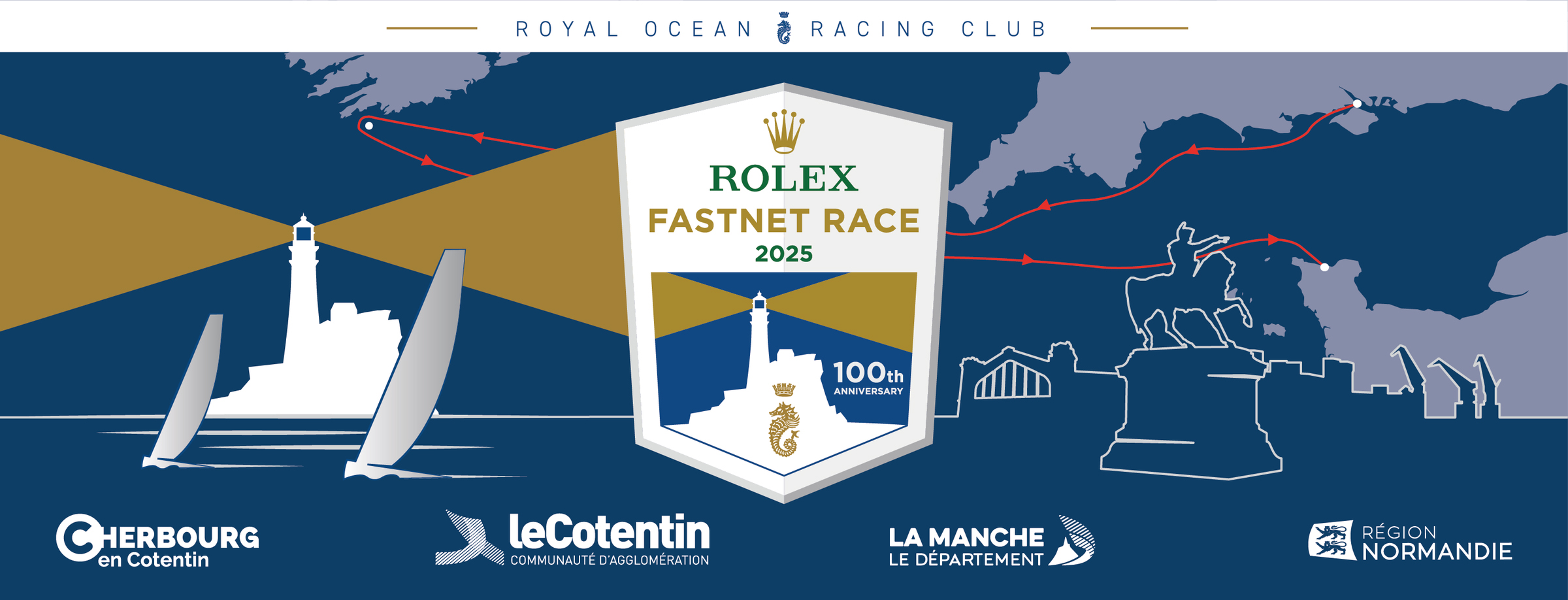19:00 Sunday 27 July 2025
Smaller boats make brisk progress
The front-runners in the 86-strong IRC Three fleet are making much faster progress than usual and were already west of Land’s End late this afternoon. However, there have been many changes towards the top of the leaderboard over the past 24 hours.
The tidal gate at Portland Bill posed the first big challenge – one that a very experienced competitor described as a “nightmare” – after negotiating the race start and gusts of just over 20 knots in the Needles Channel.
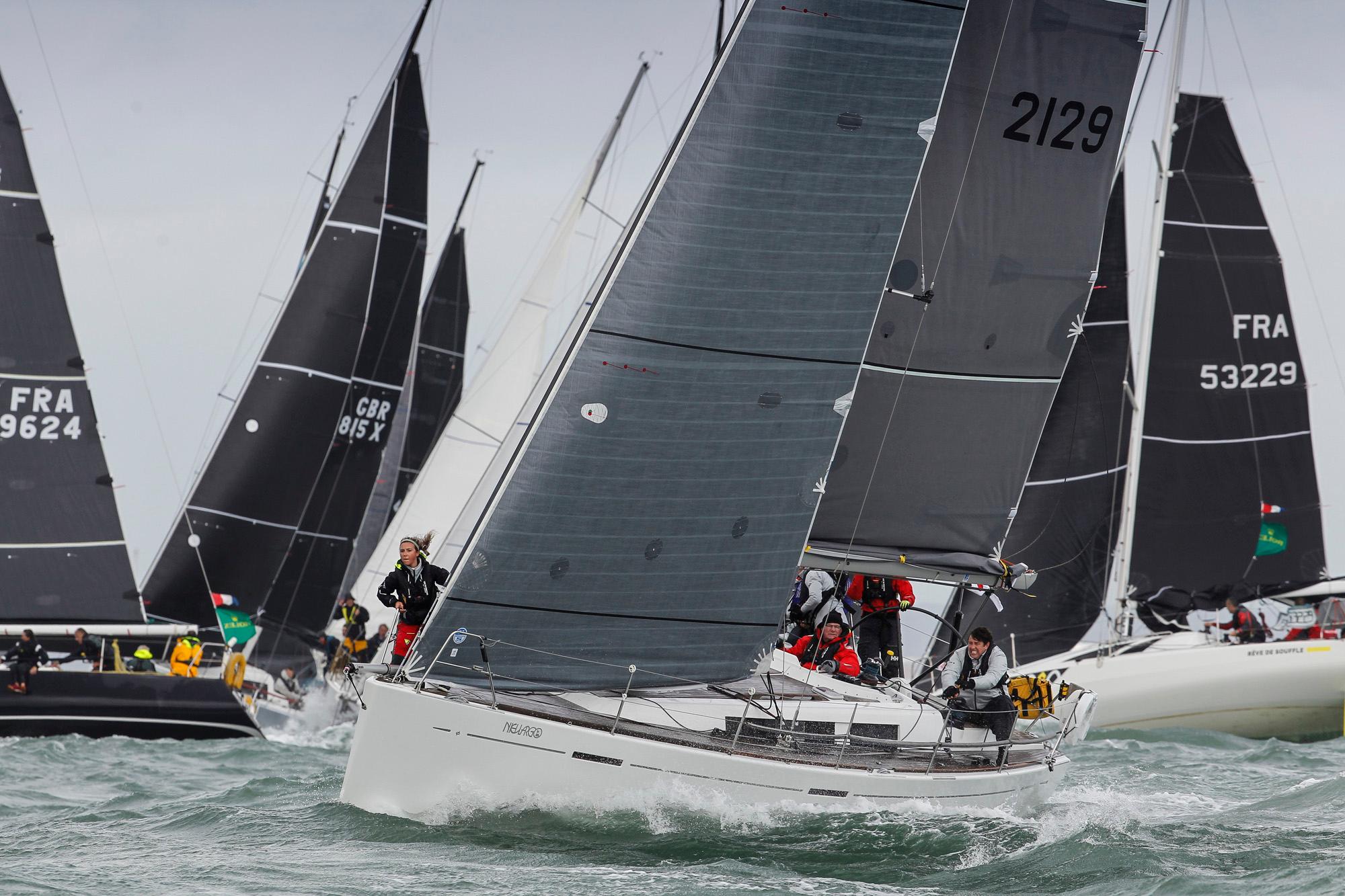 Nieulargo leads IRC Three to Portland © Paul Wyeth/PW Pictures/RORC
Nieulargo leads IRC Three to Portland © Paul Wyeth/PW Pictures/RORC
With the tidal stream turning against the fleet as they approached Portland, the bulk of the fleet opted for the narrow inshore passage. They were led in by Denis and Annamarie Murphy’s Grand Soleil 40 Nieulargo from Ireland, Jean Cruse’s A35 Crew’s Control, and Ali Bisson’s Sun Fast 3600 Killing Time.
To make this strategy work, it’s vital to rock hop unnervingly close to the beach, but many competitors misjudged this aspect and were pushed to the south and into the strongest adverse tide. Nieulargo, Sam White and Sam North’s JPK 10.80 Mzungu!, plus Fujitsu British Soldier, the British Army’s Sun Fast 3600 skippered by Phillip Casewell, were the first boats able to escape to the west and into the weaker tidal streams in Lyme Bay.
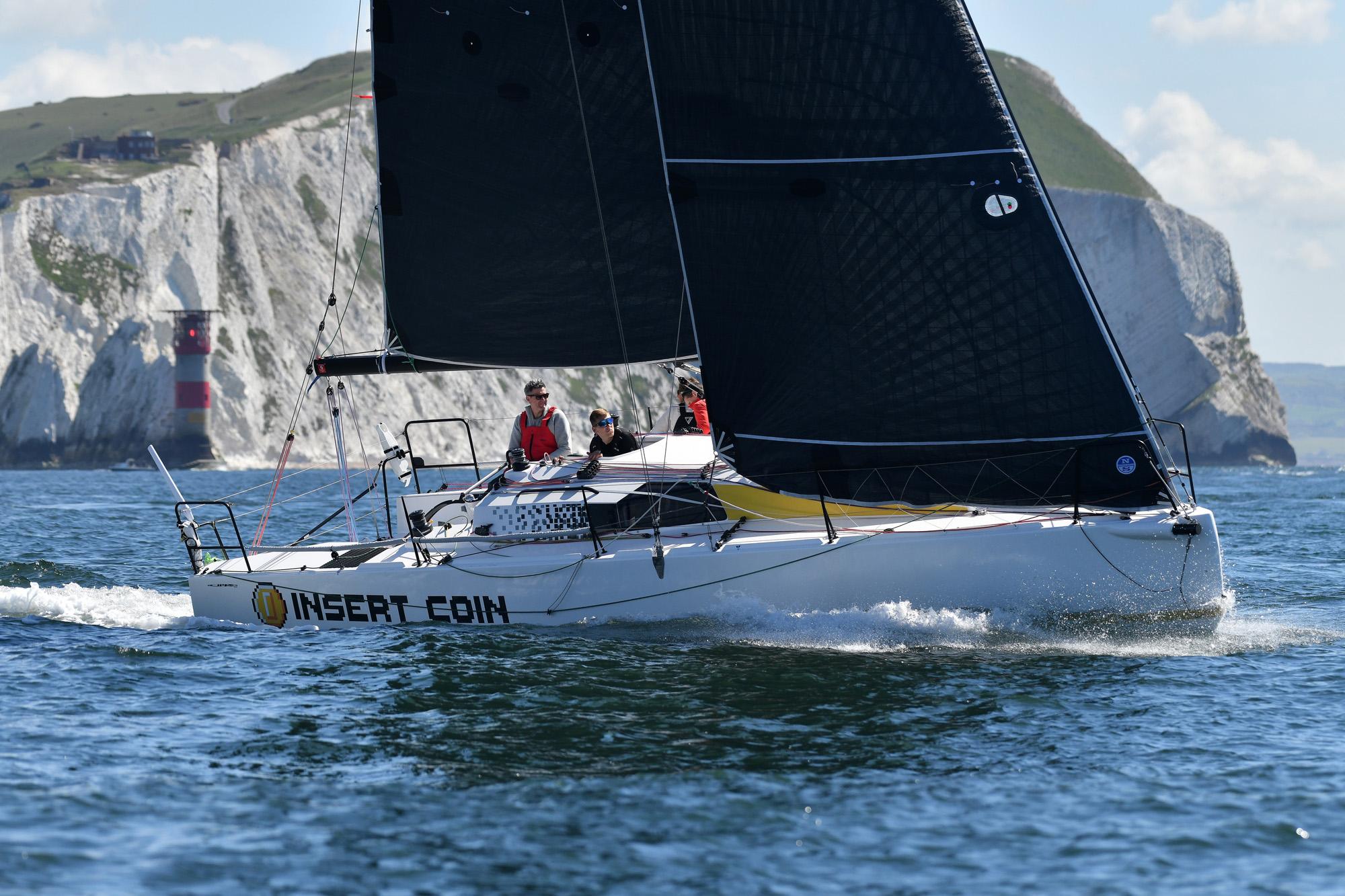 Mixed conditions for Insert Coin © Rick Tomlinson/RORC
Mixed conditions for Insert Coin © Rick Tomlinson/RORC
Gareth Edmondson’s Sun Fast 3300 Insert Coin was also among this group that went rock hopping, although later this morning, she was wallowing in 9 knots. But according to Charles Darbyshire, the mood was good onboard: “We've had frankfurters for breakfast and cups of tea all round and we’re ready for another day at the races.”
They had enjoyed Saturday’s start: “The 10 minute delays between each start were good because you've got a really defined start line and a really defined group of people. Everyone was really orderly and found their little slot. After the last two races, when it was crazy windy, those who had done it before were just really happy to be sailing in ‘normal conditions.’ Although we did get 21 knots as we went down the Needles Channel and over the bank, which I think just established our position on the race course.”
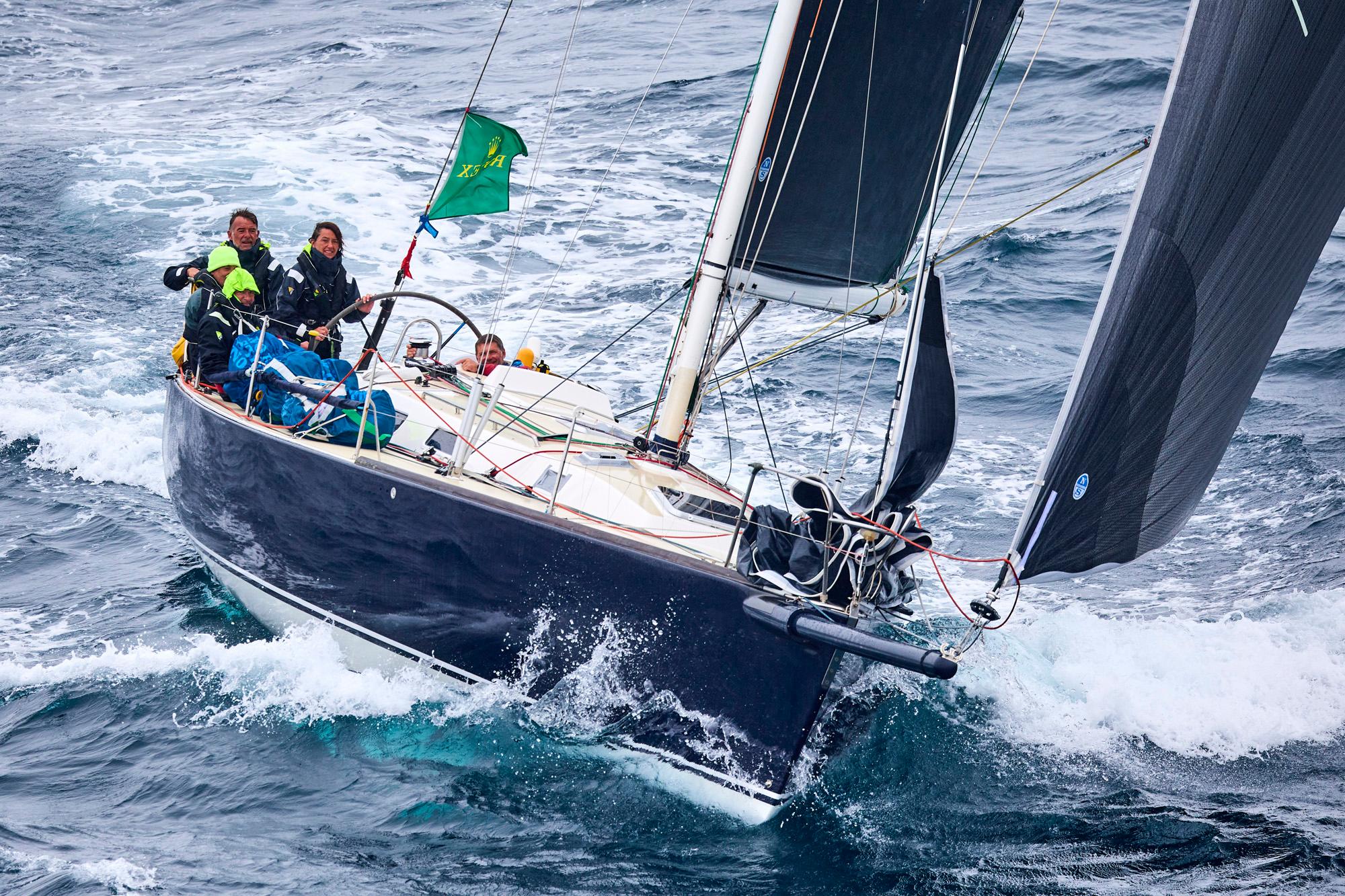 J/120 Hey Jude © ROLEX\Carlo Borlenghi
J/120 Hey Jude © ROLEX\Carlo Borlenghi
Those who opted not to engage at Portland, including Philippe Girardin’s J/120 Hey Jude, also did well, staying to the south of the strongest adverse stream. Girardin remained in the lead on the water as the fleet passed south of Start Point in the early hours of the morning, after a fast reach across Lyme Bay.
On the approach to Lizard Point in lighter airs, around 1000 BST this morning, the leaders split, with a group led by Mzungu!, tacking to the north. They were quickly followed by Fujitsu British Soldier, Rob Cragie and RORC Commodore Deb Fish on Sun Fast 3600 Bellino, and Killing Time.
Yet this difference in strategy appeared to make no appreciable difference to the results, and at 1230 BST, two of the lower-rated boats in the fleet, Julien Bentz’s J/99 Whimjy 99 and Crew’s Control, headed the leaderboard after IRC time correction, just ahead of Hey Jude, Mzungu! and Bellino.
Sadly, one of the pre-race favourites in IRC Three, Noel Racine’s JPK 10.30 Foggy Dew, is one of a small number of retirements, having dropped out as a result of sail damage before rounding Portland Bill. It’s a reminder that, even in more benign conditions than the last two editions served up on the opening days, the Rolex Fastnet Race remains a challenge even for some of the best prepared teams – Racine is a veteran of 10 editions of the race and took second place overall in 2013.
Initially, IRC Four benefitted from starting in a stronger favourable tide than other classes. However, they reached the big tidal gate at Portland with a stronger adverse stream than IRC Three. Radboud Crul’s Dehler 36 Rosetta and Adrien Zucconi’s JPK 10.10 Loiza led a large group into the inshore passage at the Bill. However, by now, the opposing tide was stronger, so it was even harder to avoid being pushed to the south than it had been for the IRC Three competitors.
A number of boats, including two father and daughter double handed teams: Richard and Sophie Palmer’s JPK 10.10 Jangada, and Richard and Emma Breese’s J/105 Mojo, plus Fred and George Neville-Jones’ J/109 Jamira and eventually even Rosetta, took more than one attempt, eventually tacking very close to the shore, before emerging to the west of the tidal race on a southwesterly track.
“We have a very interesting track – it took five or six attempts for us to get round, but there’s a reason for that,” Sophie Palmer reported. “We want to keep going west, but everyone has been taken south.”
“You have to pick your moment, come in fast and very close, then with a bit of momentum you can just about scrape past and keep going,” adds Richard.
On the other hand, Ludovic Menahes’ JPK 10.10 Raphael and the 41 year old J/35 Fever, skippered by former Volvo Ocean Race Simeon Tienpont, chose not to engage with Portland. Instead, they were among a group of boats staying more than three miles to the south, apparently unconcerned that they were tracking well to the south of the next headland, Start Point, 50 miles to the west southwest.
The fleet then enjoyed fast reaching conditions across Lyme Bay, with many boats nearing 10 knots speed over the ground, and the front runners, led by Raphael – the boat furthest offshore at this stage – passing Start Point well before sunrise.
However, by 0600 BST, calm patches were starting to appear south of the Salcombe estuary, with some boats down to only 2.5 knots of speed. These subsequently enlarged, and by 0730 several competitors were being swept back towards Cowes by the tide.
Chris Choules, skipper of Sigma 38 With Alacrity, said they endured “an extremely frustrating five hours,” in four knots of wind and an awkward sea state that “killed our speed stone dead. You shouldn’t go offshore racing if you don't have a good sense of humour!”
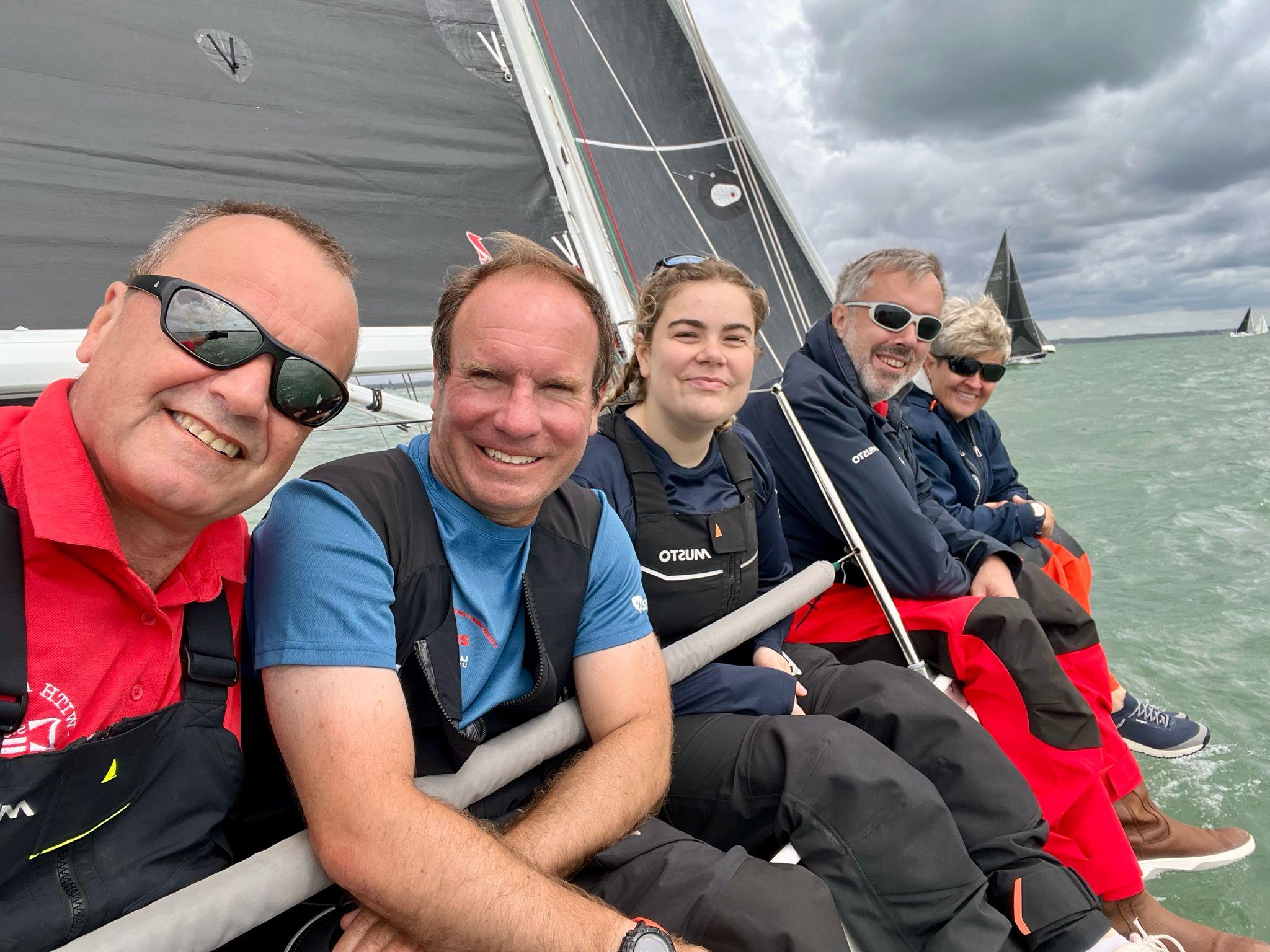 All smiles from the race course on With Alacrity © With Alacrity
All smiles from the race course on With Alacrity © With Alacrity
Nevertheless, by 1000 BST, With Alacrity was making six knots towards the Lizard, sailing at a 60 degree true wind angle, with “everyone on board in good spirits and eating well.”
By contrast, the front runners in faster, higher rated boats had remained in reasonably solid breeze throughout, with their speed over the ground rarely dropping below 5 knots. As a result, by mid morning the fleet had spread out over a distance of 45 miles from west to east, a figure that continued to grow as the day progressed.
Nevertheless, one of the big attractions of this race for many, including your scribe, lies in the multiple transitions that have to be negotiated throughout the race. Strategy, tactics and weather routing are therefore just as important as boat speed.
